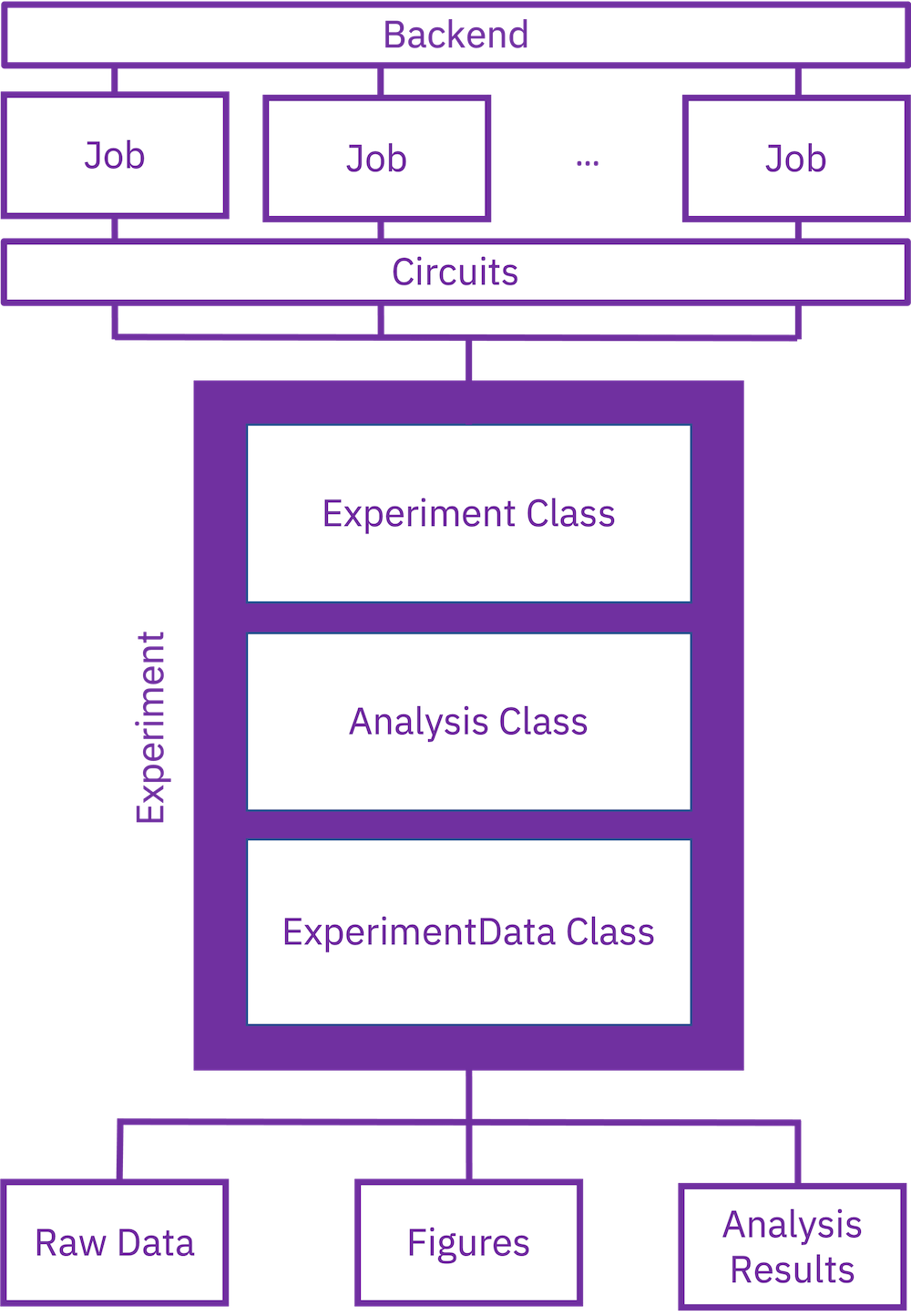Introduction¶
What is Qiskit Experiments?¶
Qiskit Experiments is a package for running device characterization and calibration experiments on top of the core functionality of Qiskit.
An experiment comprises a series of circuits and associated metadata. Once the experiment circuits are executed on a quantum backend, either real or simulated, analysis is run automatically on the jobs and results in the form of data, fit parameters, and figures are generated.
In addition to the experiment framework itself, Qiskit Experiments also has a rich library of experiments for calibrating and characterizing qubits.
What Qiskit Experiments can do¶
Run characterization and calibration experiments such as quantum volume and randomized benchmarking
Run built-in or customized experiments with all the options available in Qiskit
Specify fit series and parameters in the analysis
Transform the data through the data processor
Visualize data with support for custom drawing backends
Save and retrieve timestamped calibration parameters for physical backends
A quick primer¶
The Qiskit Experiments package consists of the experimental framework and the experiment
library. The framework itself consists of Experiment and Analysis classes, the
latter of which uses the Data Processor, Curve Analysis, and Visualization modules
to process the data, fit it to specified models, and plot the results, respectively.

Experiments start with an Experiment class, which instantiates the circuits that
will be run and also the metadata and options that will be used for the experiment,
transpilation, execution, and analysis. During execution, circuits are automatically
packaged into one or more jobs for the specified backend device.
Each Experiment class is tied to its corresponding Analysis class. Once jobs
complete execution, the Analysis class processes and analyzes raw data to output
an ExperimentData class that contains
the resulting analysis results, figures, metadata, as well as the original raw data.